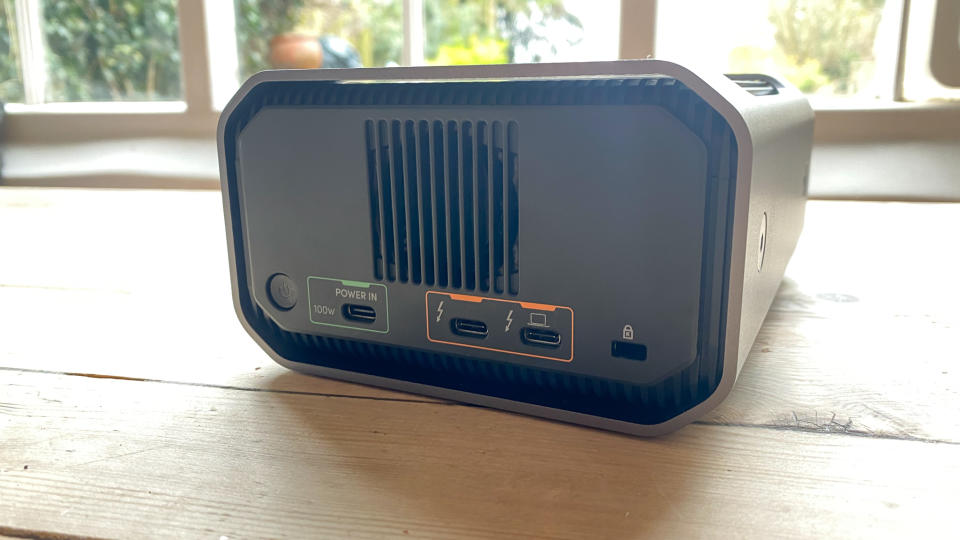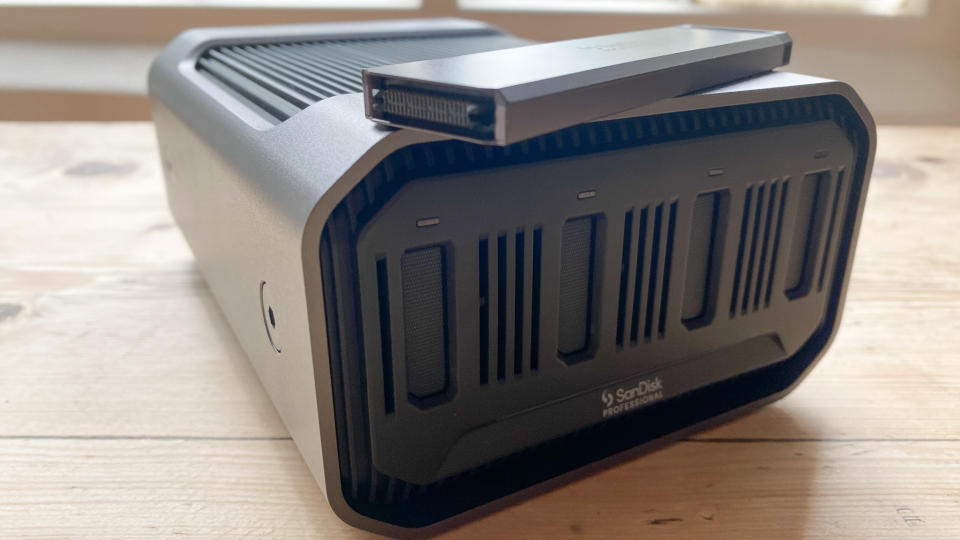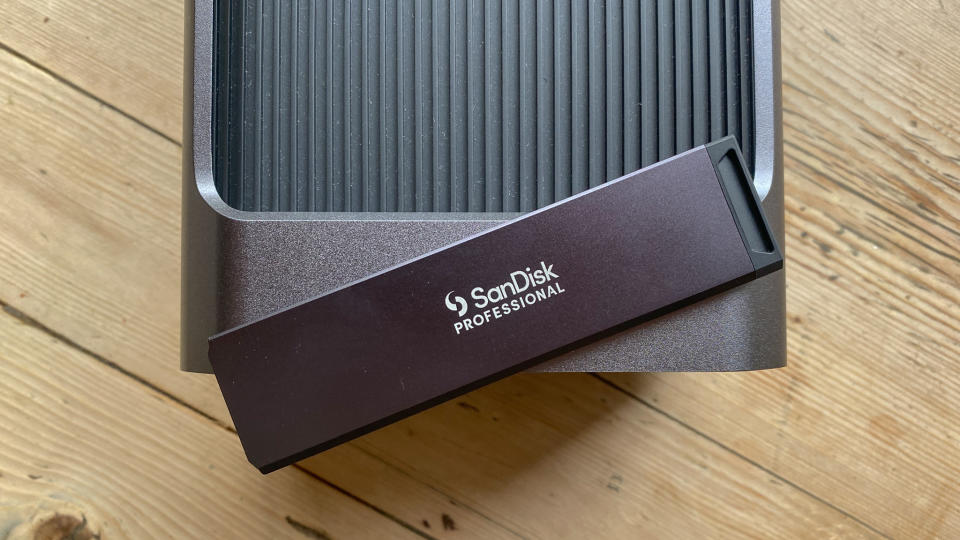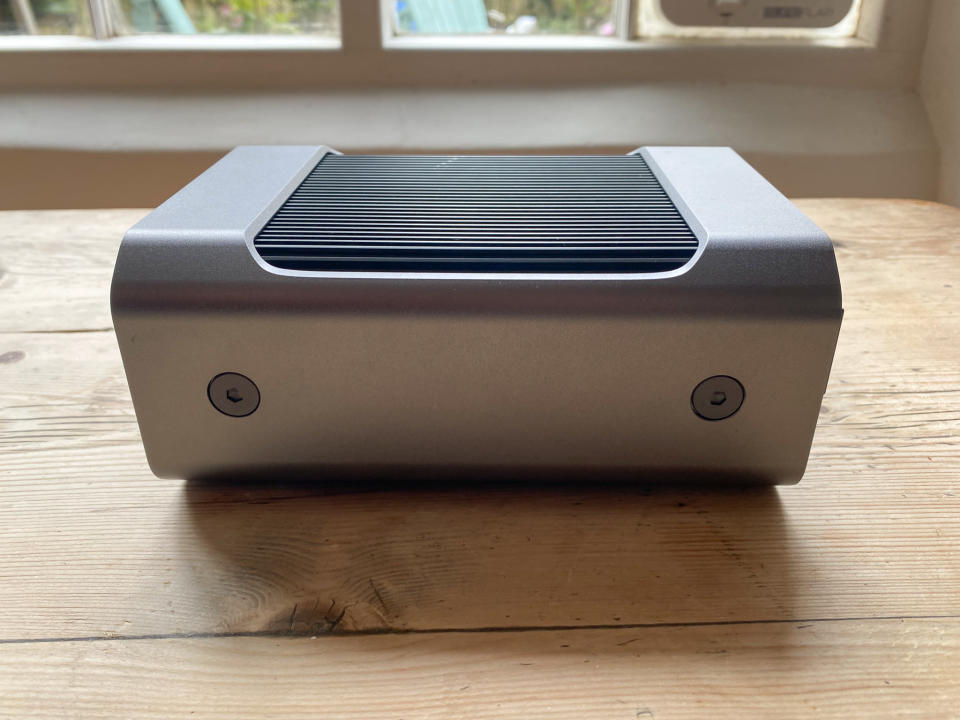SanDisk Professional Pro-Blade Station review: yes, this desktop storage enclosure is for pros

For most creative professionals, the days of standard, inbuilt storage for Mac or PC being up to the job are long gone. Not only have the size of files dramatically increased as technology has progressed, but access requirements have also become more stringent, as professionals look to work on the go from different systems, often accessing many files at a time and editing large documents using power-intensive programmes. Content creators are also working with much higher bitrates and file sizes than even just a few years ago, so high-capacity storage is a must for any creative looking to keep up with emerging tech.
Storage solutions offered by third parties, then, have to adapt to suit, and there are many companies out there constantly evolving to meet the demands of professionals and enthusiasts who need to read and write large files quickly. SanDisk Professional is a well-known brand for its innovative storage solutions and often leads this pack, with a diverse and impressive line-up of products catering to people whose demands and requirements often go further than your average computer user.
In this review, we’ll look at both the Pro Blade enclosure and the Pro Blade SSD Mags that are sold separately but are required to slot into the unit. We’ll assess its usability for content editing and look at why, in the era of cloud-based subscription model storage, it’s especially important to consider a scalable and flexible storage solution for your files.

SanDisk Professional Pro-Blade Station review: Key specifications
Design

The Pro-Blade Station is a neat package and essentially works as a docking station for SanDisk’s own NVMe SSD memory cards that mitigate the need to carry around a stack of external hard drives. It’s a fairly weighty unit but is easy enough to navigate and well-designed, with a simple power and Thunderbolt 3 or 4 connectivity to your computer at the back. We liked the way it fits in with other products in the SanDisk Professional ecosystem, with a sleek black look, and nice little features we appreciated are included such as colour-coded cables so it’s easy to see what to plug in where.
The chassis itself feels durable and the sleek matte finish helps dissipate heat efficiently ensuring optimal performance during prolonged use. There’s a built-in fan at the back, but during general light photo and video editing tasks, the only time you’ll hear this is when the unit itself switches on. It’s quite loud, but in most cases, it turns off and rarely comes back on again or proves disruptive. For people who have constant high-demand tasks running, however, the fan noise is something to consider as we found it quite intrusive when it’s on.
One thing that disappointed us was the bulky lump of a power brick on the plug itself, which makes cable management a bit tricky and could limit some users if lots of adaptors, extension cables or plug boards were being used. Likewise, we would have liked to have seen a slightly longer Thunderbolt cable to attach to the computer, as the short cable provided means that the unit has to sit close by on the desk and this can limit available space slightly.
Features

There’s no doubt that SanDisk has optimised these drives for video editors and content creators working on a Mac setup. The SSD Mags come pre-formatted in APFS (the default file system in the latest editions of MacOS), so although it’s perfectly possible to work on a Windows device, you’ll have to reformat the mags before you do so.
The real selling point of the Pro-Blade Station is its entirely modular setup and concept, which means you can buy as many SSD mags as you like, and choose whichever four to use in the slots. Although the unit itself takes up space on your desk, compared to most other storage solutions like NAS drives, this is an efficient and pleasingly elegant solution. If you’re not connecting up to a network and need to focus on local storage only, we think it’s a great solution, and the SSD mags themselves are tiny so can easily be labelled up and stored away for future use.
There’s data encryption and security features included, and there’s also the option of adding to that with SanDisk’s SSD Dashboard, allowing you to manage and monitor device performance, temperature and read and write speeds. The enclosure supports TRIM and S.M.A.R.T. monitoring, allowing users to optimize SSD performance on the fly.
Performance
Connecting over Thunderbolt 3, read and write speeds to the SSD are impressive, with around 2500 – 3000MB per second on both the read and the write, which is more than three times the speed of some of the fastest small external USB style hard drives. This makes it really useful to use as a permanent hard drive for intensive video work and both the Pro Blade mags and the unit itself are designed to be used for long periods, again unlike some external plug-in SSDs on the market which have no inbuilt temperature control.
When it comes to the SSD mags, these are fast, small, easy to carry around and in many ways much more versatile than traditional external SSDs. Some cameras allow you to attach these mags straight to them and allow shooting directly onto them, and if you purchase SanDisk’s SSD Transport, it allows you to add the mags to a travel-style case, which makes them easy to use and plug into your computer when in transit. There’s a slight disappointment over the fact that this Pro-Blade enclosure is quite heavy and bulky, so travelling with it isn’t really an option and you have to purchase a fairly expensive accessory to allow that to be possible, but in fairness, SanDisk doesn’t shy away from the fact it focuses more on professional desk-based users with this enclosure.
Should I buy the SanDisk Professional Pro-Blade Station?

If you’re needing high sustained performance, easy to use and permanent desk-based storage for large-scale video editing work, we’d highly recommend both the Pro Blade enclosure and the mags themselves.
It’s worth bearing in mind that the costs do add up. The enclosure itself is nearly £500 and each 1TB mag costs £176, so to get a really decent amount of storage you’re looking at a price slightly too close to the £1,000 mark for our liking, despite the quality and seamless performance the units provide. The modular concept is excellent and we like the fact that the mags are small and easy to store, and if you’re finding you’re constantly adding new external hard drives to make space for more files and content, we’d recommend switching to this ecosystem as soon as possible so you can purchase new SSD mags for the enclosure as you need them. That being said, we think this may only suit a minority of users.
For most people who just want to expand their storage to access more files, we’d probably recommend something like SanDisk’s G40 Thunderbolt SSD – it’s far more suited to travel, has an IP68 dust and water resistance rating, offers more or less the same read/write speeds as these SSD mags and costs about half the price of this whole unit in total.
If you are running a BlackMagic or some Panasonic camera systems, operate a professional studio and need to write directly on to these SSD mags, we can see the enclosure being highly worthwhile, but again would probably reserve this recommendation for businesses and studios rather than the average content creator or photographer.

